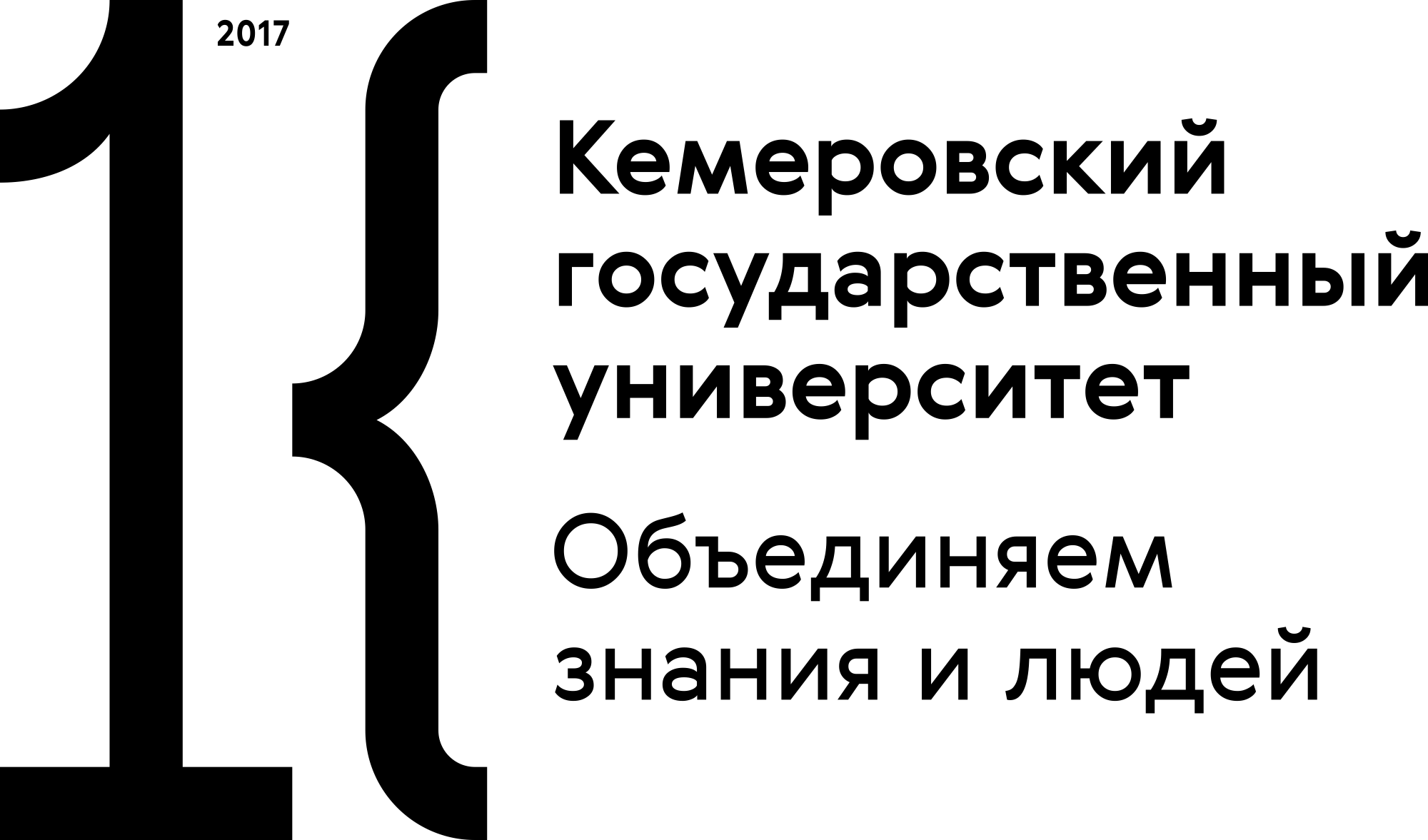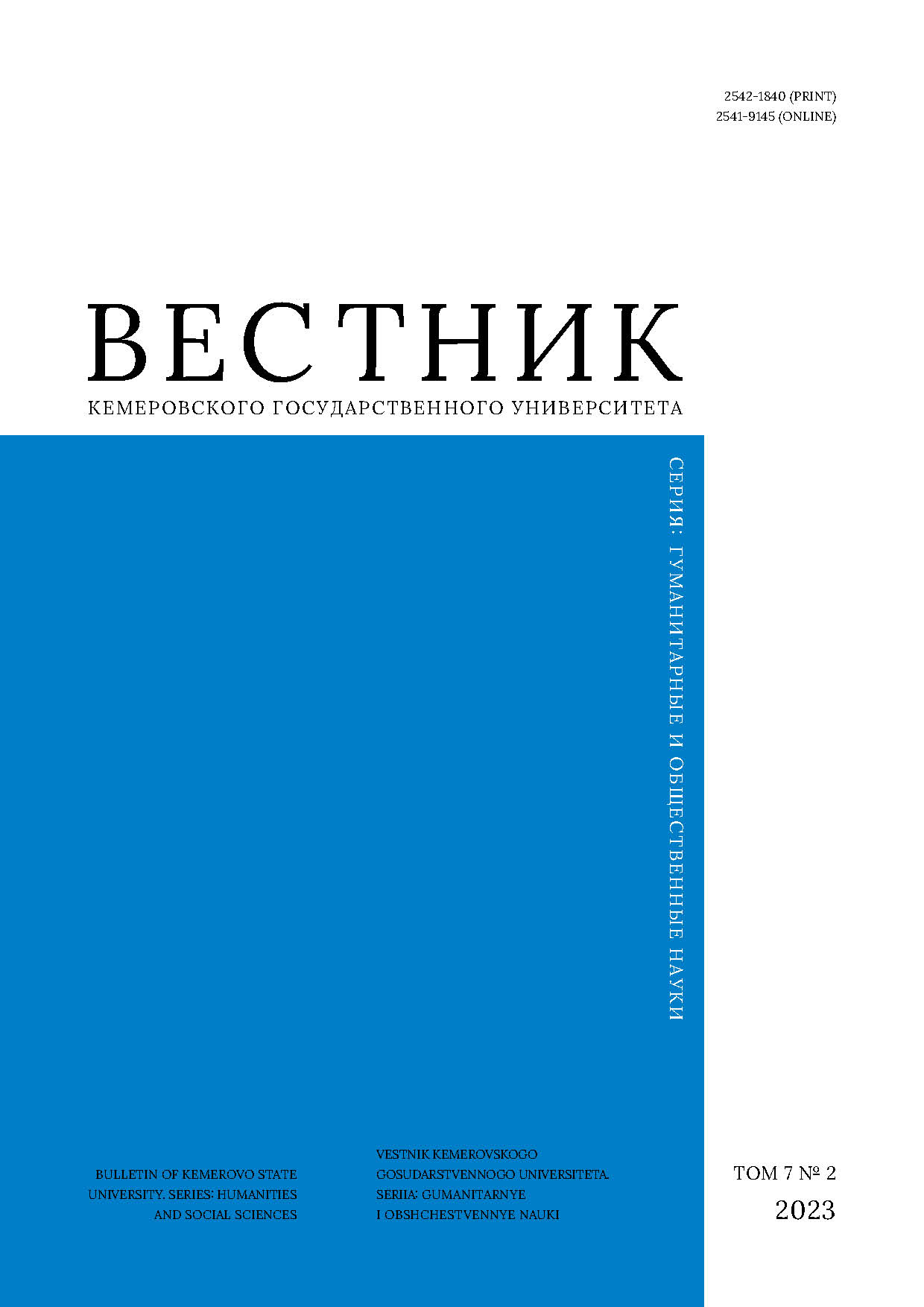Kemerovo, Russian Federation
Kemerovo, Russian Federation
Kemerovo, Russian Federation
Kemerovo, Russian Federation
Tomsk, Russian Federation
he present research featured associations triggered by a stimulus that combines verbal and emblematic elements. The directed psycholinguistic experiment included 200 students of the Kemerovo State University who gave 735 associations to two heterosemiotic stimuli, i.e., the coat of arms of Kemerovo verbally marked as "Kemerovo" and the coat of arms of the Kemerovo region marked as "Kemerovo Region". A coat of arms is a metaphorical emblem that combines iconic signs, symbols, and attributes that designate both concrete and abstract concepts. The study relied on the conceptual and terminological approaches and methods of psycholinguistics, as well as on general scientific methods. The material was obtained using a directed chain psycholinguistic experiment. The obtained associations made it possible to identify the specifics of decoding the visual elements of the heterosemiotic stimulus, namely object, shape, color, and idea. The verbal element of the heterosemiotic stimulus directs the correct decoding of the information encoded in the stimulus. However, a psycholinguistic experiment based on a verbal-emblematic stimulus may lead to a partial blockage in some respondents, who may experience difficulties in generating associative meanings. Further cognitive research based on psycholinguistic experiments with heterosemiotic systems may provide new scientific data on the interaction of perception, representation, and verbal coding of processed information.
emblem, linguistic consciousness, heterosemiotic stimulus, association, cognitive research
1. Zainullin M. V. On linguistic consciousness. Vestnik Bashkirskogo universiteta, 2011, 16(4): 1243-1245. (In Russ.) https://www.elibrary.ru/ooxtjz
2. Maklakova E. A. About linguistic and cognitive consciousness and meaning of the word. Nauka, obrazovanie, obshchestvo, 2015, (2): 144-149. (In Russ.) https://doi.org/10.17117/no.2015.02.144
3. Manaenko G. N. Mental - cognitive (consciousness) - ideal - cognized (consciousness). Cognitive studies in language, 2008, (3): 292-303. (In Russ.) https://www.elibrary.ru/pnonkt
4. Sternin I. A. Communicative and cognitive consciousness. With love for the language, ed. Vinogradov V. A. Moscow-Voronezh: IL RAS; VSU, 2002, 44-51. (In Russ.) https://www.elibrary.ru/yrkojp
5. Sternin I. A. Linguistic, communicative, and cognitive consciousness: differentiation. Linguistic consciousness: traditional vs. controversial: Proc. XIV Intern. Symposium on Psycholinguistics and Communication Theory, Moscow, 29-31 May 2003. Moscow: IL RAS, 2003, 264-265. (In Russ.) https://www.elibrary.ru/ykrsol
6. Alymova E. N. Associative experiment as a method of studying linguistic consciousness. Nauchno-tekhnicheskiye vedomosti SPbGTU, 2006, (4): 136-138. (In Russ.) https://www.elibrary.ru/kdsmxn
7. Borisova Yu. A. Association experiment in the modern psycholinguistic research. Psikhologiya. Istoriko-kriticheskie obzory i sovremennye issledovaniya, 2019, 8(1-1): 265-275. (In Russ.) https://doi.org/10.25799/AR.2019.43.1.074
8. Pishchalnikova V. A. Associative experiment: theoretical and applied perspectives of psycholinguistics. Mosty. Zhurnal perevodchikov, 2019, (2). (In Russ.) https://www.elibrary.ru/rzcbqx
9. Svetkina A. A. Directed associative experiment as method for detecting indications of language consciousness. Linguistica Juvenis, 2021, (23): 99-111. (In Russ.) https://www.elibrary.ru/ilmgdo
10. Ufimtseva N. V. Associative experiment and cognitive strategies of respondents. Cognitive studies in language, 2019, (37): 920-925. (In Russ.) https://www.elibrary.ru/slknfh
11. Çetinkaya F. Ç., Sönmez M., Topçam A. B. A formative essessment example: word association test. International Education Studies, 2020, 13(8): 103-117. https://doi.org/10.5539/ies.v13n8p103
12. Finikova I. V. Linguistic consciousness as a sign form of expression of the individual cognitive consciousness. Vestnik nauki, 2019, 2(6): 230-239. (In Russ.) https://www.elibrary.ru/xbfrmz
13. Avdysheva Ye. G. Methods of concept learning: association experiment. Cognitive-discursive space in modern humanitarian knowledge, ed. Khoutyz I. P. Krasnodar: KubSU, 2018, 6-10. (In Russ.) https://www.elibrary.ru/xulqzv
14. Gerasimova M. N. Associative experiment as a tool to identify the semantic field of the concept. Cherepovets State University Bulletin, 2017, (4): 53-57. (In Russ.) https://doi.org/10.23859/1994-0637-2017-4-79-8
15. Konogorova A. V. Associative experiment as a method of cognitive research. Aktualnye problemy gumanitarnykh i estestvennykh nauk, 2010, (6): 146-148. (In Russ.) https://www.elibrary.ru/ncpovt
16. Ruchina L. I. Associative experiment as a tool for revealing cognitive characteristics of a concept. Vestnik Nizhegorodskogo universiteta im. N. I. Lobachevskogo, 2012, (5-3): 102-106. (In Russ.) https://www.elibrary.ru/qiovfp
17. Arkhipova S. V. Associative experiment in psycholinguistics. Bulletin of Buryat State University, 2011, (11): 6-9. (In Russ.) https://www.elibrary.ru/ofnirr
18. Vygovskaya D. G. Associative experiment as one of the methods in psycholinguistics. Science SUSU: Proc. 66th Sci. Conf., Chelyabinsk, 15-17 Apr 2014. Chelyabinsk: SUSU, 2014, 1157-1164. (In Russ.) https://www.elibrary.ru/smtsex
19. Kabanovskaya E. Yu. The study of verbal associations in psycholinguistics. Simvol nauki, 2020, (5): 139-140. (In Russ.) https://www.elibrary.ru/tdoctj
20. Shchekotikhina I. N. Systematization of associative experiment data: problems, approaches, new ideas. Word, statement, and text in cognitive, pragmatic, and cultural aspects: Proc. VIII Intern. Sci. Conf., Chelyabinsk, 20-22 Apr 2016. Chelyabinsk: Entsiklopediia, 2016, 150-154. (In Russ.) https://www.elibrary.ru/wlopjd
21. Miklashevski A. A. Verbal and visual processing of information: experimental research. Vestnik Tomskogo gosudarstvennogo universiteta, 2014, (383): 56-61. (In Russ.) https://www.elibrary.ru/smckfr
22. Kameneva V. A., Rabkina N. V., Potapova N. V., Morozova I. S. The influence of the semiotic type of stimuli on the extraction of information from language consciousness. Vestnik NSU. Series: Linguistics and Intercultural Communication, 2022, 20(2): 110-125. (In Russ.) https://doi.org/10.25205/1818-7935-2022-20-2-110-125
23. Kolmogorova A. V. Psycholinguistic properties of the Russian words and their visual correlates in the linguistic conscience of Tuvan-Russian bilinguals: an experiment-based study. New Research of Tuva, 2021, (2): 197-210. (In Russ.) https://doi.org/10.25178/nit.2021.2.16
24. Jenkins J. J. Transitional organization: association techniques. Psycholinguistics: a survey of theory and research problems, eds. Osgood C. E., Seboek T. A. Baltimore: Waverly Press, Inc., 1954, 112-118.
25. Klimenko A. P. The third type of word associations and types of semantic connection between words in the system. Romance and Germanic linguistics. Minsk: Vysheish. shk., 1975, iss. 5, 42-58. (In Russ.)
26. Karaulov Yu. N. Active grammar and associative-verbal network. Moscow: RLI RAS, 1999, 180. (In Russ.) https://www.elibrary.ru/pwfahf
27. Guts E. N. Associations represented by non-codified vocabulary: looking for an adequate description technique. Bulletin of the South Ural State University. Ser. Linguistics, 2005, (11): 13-19. (In Russ.) https://www.elibrary.ru/kzjxod
28. Martinovich G. A. Types of verbal connections and relations in the associative field. Voprosy Psikhologii, 1990, (2): 143-146. (In Russ.)
29. Stepykin N. I. Classification of verbal responses as the most important stage of interpreting experimental data. Izvestiya Yugo-Zapadnogo gosudarstvennogo universiteta. Seriya: Lingvistika i pedagogika, 2017, 7(1): 39-46. (In Russ.) https://www.elibrary.ru/ypmagh
30. Goroshko E. I. The study of verbal associations on colors. Linguistic consciousness and the world image, ed. Ufimtseva N. V. Moscow: IL RAS, 2000, 291-313. (In Russ.) https://www.elibrary.ru/rxugkd
31. Reshchikova I. P. Mining territory as a regional brand. Vestnik Kemerovskogo gosudarstvennogo universiteta, 2010, (1): 119-125. (In Russ.) https://www.elibrary.ru/mbhmah
32. Verchagina I. Yu., Veretennikova M. Regional coats of arms as part of the history of the region: Kemerovo region - Kuzbass. Innovations in technology and education: Proc. XIV Intern. Sci.-Prac. Conf., Belovo, 26 Mar 2021. Kemerevo-Belovo-Novosibirsk-Veliko-Tyrnovo-Shumen: KuzSTU, 2021, 9-13. (In Russ.) https://www.elibrary.ru/cgpduo
33. Gerasimchuk D. M., Melnik N. V. The image of the Kemerovo region in the ordinary linguistic consciousness of citizens as a result of the political representation of the region. Filologiya i chelovek, 2019, (2): 111-123. (In Russ.) https://doi.org/10.14258/filichel(2019)2-10
34. Kondrateva O. N., Valko O. V., Gerasimchuk D. M., Golev N. D., Dudareva Ya. A., Zheglo A. V., Ineshina S. V., Kuznetsov D. V., Makrushina Yu. A., Maksakova E. E., Melnik N. V., Novoklinova A. V., Saveleva I. V., Rabkina N. V., Frolova T. I. Kuzbass: complex cognitive-discursive modeling of the image of the region. Moscow: Pero, 2020, 308. (In Russ.) https://www.elibrary.ru/snbdju
35. Kondrateva O. N., Frolova T. I. The image of region in ordinary language consciousness of its residents (on an example of an image of Kuzbass). Psycholinguistics, 2018, (24-2): 78-97. (In Russ.) https://doi.org/10.31470/2309-1797-2018-24-2-78-96
36. Yanitskiy L. S. Image of Kuzbass in the perception of student youth of the region. Professional Education in Russia and Abroad, 2020, (3): 99-106. (In Russ.) https://www.elibrary.ru/qkcuxl






















